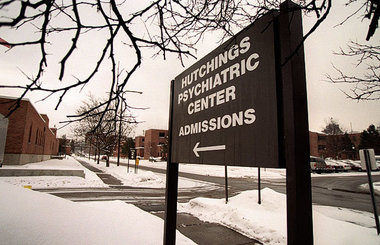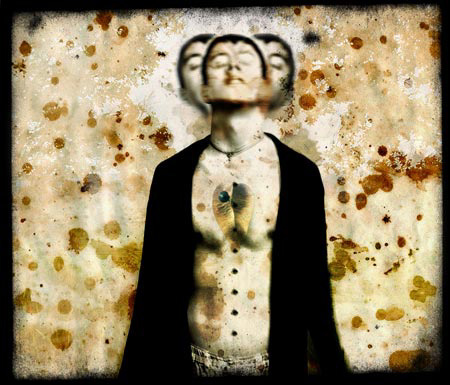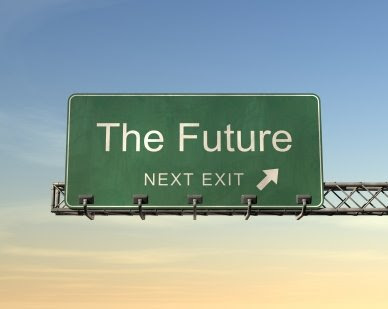by Mindy Fried | Apr 1, 2015 | adventure, applied sociology, careers, finding work, gender, making choices, program evaluation, race, social science research, sociology
When attempting to transform communities through social policy, it is imperative to not only understand what the social problem is, but also how and why it exists and persists. Trained sociologists have indispensable tools for this type of applied work. – Chantal Hailey
In my last blog post – Choosing Applied Sociology – I referred to a 2013 article in Inside Higher Ed in which Sociologist Roberta Spalter-Roth, from the American Sociological Association, comments that “In sociology, there is close to a perfect match between available jobs and new Ph.D.s”, if you take into account non-academic jobs (https://www.insidehighered.com/news/2013/08/06/sociology-job-market-continues-recover-steadily). She notes that while these “applied” jobs often pay more than university teaching positions, graduates rarely know about them and professors may even discourage their students from entering these professions.
Unfortunately, the majority of Sociology grad students view the tenure-track job market as their only career choice, but there are many Sociologists who have chosen to work in applied settings. The skills gleaned through a Sociology degree are applicable – or dare I say, “marketable” – in a whole host of other venues, including government, corporations, and all sizes of nonprofits, local, state and national. We are researchers, lobbyists, program managers, teachers/trainers, and more.
![]()
I decided to organize a panel on this topic at the annual meeting of Sociologists for Women in Society, held in Washington, DC. And on February, 2015, three distinguished Applied Sociologists from the DC area presented about why they chose this route of practice, what they do and for which populations, and how they incorporate sociological principles into their work, framed by a race, class, gender lens. In this post, one of the speakers, Chantal Hailey, talks about her draw to applied work, which she began as a Sociology student at Howard University. After a number of years doing Applied Sociology, Chantal is now a first year doctoral student at New York University.
Mindy: What interested you in doing applied work?
Chantal: Throughout out my childhood, I lived, attended summer camps and had friends and family who lived in low-income urban neighborhoods. I was able to see how low-quality schools, subpar housing, limited opportunities and violence shaped young peoples’ lives and limited their potential. I had a passion to transform these communities into places where all people could thrive. But on the other hand, I was a nerd. I enjoyed research, history, math and statistics.
During my internship at a research branch of a community development corporation, I discovered that providing statistical trends on health, education, and housing to nonprofits could help them inform how they served low-income communities. I also discovered that the voices of women and people of color were sometimes absent from these discussions. I knew that in order to get a seat at the table, as a black woman, I needed to have the highest credential possible. So I began my academic journey at Howard University (as an) undergraduate in the Sociology department, knowing that my ultimate goal was to complete a doctoral degree in Sociology.
Mindy: Did you know you were learning about Applied Sociology at that point?
Chantal: While I was at Howard, I didn’t know of any distinction between applied and “pure” sociology. I just completed papers on topics that were important to me–public housing, poverty, and education. Urban Institute (UI) kept popping up in my literature reviews and I applied for internship there after my junior year.
Mindy: What did you do when you were at Urban Institute?
Chantal: At Urban Institute (UI), I transformed from an intern to a Research Assistant to a Research Associate. UI’s research is a combination of researcher-generated projects and responses to RFPs (Requests for Proposals). Two of my projects exemplify the type of applied sociology I was able to undertake at UI. The first is the “Long Term Outcomes for Chicago Public Housing Families” project (LTO). LTO is a 10-year longitudinal study of families whose Chicago public housing was demolished or revitalized through the Plan for Transformation. We employed mixed methodology – family surveys; in-depth interviews with heads of household, young adults and children; and administrative data review.
We found that after relocation from distressed public housing developments, families generally lived in better quality housing in safer neighborhoods, but many adults struggled with physical illnesses and youth suffered the consequences of chronic neighborhood violence.
Mindy: What was your role there? What did you do?
Chantal: As a team member in this project, I assisted in developing the survey, helped lead data analysis, generated the young adult interview guides and conducted in-depth interviews with the young people in the study. I also co-led and lead-authored research briefs on housing and neighborhood quality and youth. A research brief is a 15-20 page synopsis of research findings. Unlike most journal articles, there is not a long literature review.
This short article allows us to disseminate the findings to wide audiences. In addition to the standard research brief, we also produced blogs, HUD online journal articles, and radio reports; and briefed the Chicago Housing Authority, Senate committee members, and the press. LTO used sociological methods to understand policy, but intentionally shared this knowledge with wider policy makers and practitioners.
Mindy: You say that trained Sociologists have “indispensable tools” for applied sociology. Can you elaborate on this a bit?
Chantal: Sociology can address a plethora of subject areas that often intersect (i.e. inequality, education, crime and violence, health, etc.), and it unveils the mechanisms behind social problems. A Sociology education trains researchers to look for the hidden transcripts among social groups and interactions, not just the most apparent narrative. It allows for simultaneous macro, meso, and micro analysis to understand multiple contributing factors. And it emphasizes the impact social context has on policies’ implementation and outcomes.
This was especially apparent in the LTO study. We understood that in addition to families’ relocation from public housing, a series of key factors – including proliferating national rates of housing foreclosure, increasing Chicago neighborhood violence, and rising income inequality – also shaped families’ experiences in South Side Chicago neighborhoods.
A Sociology education provides an array of methodological tools that can be tailored to best address research questions (i.e. interviews, focus groups, ethnography, quantitative analysis). It pairs theories of race, class, family structure, etc. to better understand social issues. These analytic and research skills allow us to partner with government, non-profit, and academic agencies to both advance sociological theory and offer practical solutions to social problems.
Mindy: Thank you! And can you provide another example of applied work you’ve done, where you’ve been able to bring your analytic and research skills to the fore?
Chantal: In D.C., I participated in a Community Based Participatory Grant funded by NIH entitled Promoting Adolescent Sexual Safety (PASS). UI, University of California San Diego, D.C. Housing Authority, and D.C. public housing residents collaborated in the PASS project.
This research team – along with a mix of individuals from different racial, class, and professional backgrounds – aimed to develop a program to increase sexual health and decrease sexual violence.
Mindy: How did you use what you were learning as a Sociology student/practitioner?
Chantal: Again, we used sociological methods to conduct this project, including an adult and youth survey, in-depth interviews with community members, participant observations, and focus groups.
Mindy: You said this project was participatory. Can you talk about who was involved? How was it participatory?
Chantal: Through the grant, we developed a community advisory board, a group of 15 residents who participated in creating the PASS program. The interactions between the community advisory board, community practitioners, and the researchers challenged the researchers to not only study educational, class, geographic and racial inequalities, but also to assess how our interactions dismantled or exacerbated power inequities.
Mindy: Earlier, when we spoke, you talked about what it was like to be an African-American researcher who also had a personal understanding of the experience of people you were researching. Can you talk a little about that?
Chantal: As an African American woman on the project with family who lived in D.C., I was personally challenged to both create distance as a researcher and closeness as a fellow black D.C. resident. I often found myself “code-switching” during community meetings, as I communicated with both my co-workers and the community members. Feeling a responsibility to and, often, sympathizing with the desires of the researchers and the residents, I also had to sometimes explain and mediate diverging understandings during conflicts. This closeness and distance dichotomy was also pertinent during data analysis. While my experiences allowed me to recognize and interpret focus group participants’ terminologies and cultural cues, I had to ensure that my sympathies with the community did not cloud my ability to see inconvenient truths.
Mindy: And how did you get what you learned out there to your target audiences?
Chantal: This research project, like most UI projects, focused on dissemination to wider audiences in palatable formats–a community data walk, research briefs, blogs and journal articles.
Mindy: Finally…now you’re a doctoral student at NYU and studying Sociology. How do you see yourself moving forward as a Sociologist? How will you incorporate what you’ve learned into your future practice? (or is that something you’re still figuring out!)
Chantal: As I continue in graduate school at NYU, I aim to crystalize my research identity and trajectory. I have methodological and policy research experience through the Urban Institute, and I am gaining theoretical expertise while completing my doctoral degree. I hope to incorporate these elements into my research and become a conduit between academia, policy makers, and urban communities to make inner city neighborhoods a place where all children can thrive. A mentor once advised me that graduate school is a journey where you begin in one place and end in another. I am tooled with amazing applied experiences and I’m excited to see how my graduate school journey directs my path.
by Mindy Fried | May 8, 2012 | arts, depression, education, finding work, graduating from college, making choices, unemployment, women and work
As our daughter goes into her final year of college, I have begun to feel a sense of trepidation about what comes next. The seniors I taught this past semester are already going into panic mode as they face a very uncertain future. Regardless of all the internships and community service experiences they are accruing, there’s no avoiding the dour statistics for young college graduates. When one student came to me, asking for advice about applying for a consulting job that was way beyond her reach, I found myself counseling her about the virtues of working in a coffee shop. So what if she’s an international relations major!

My first “real” job after graduating college was working in a state psychiatric hospital. This seemed like a “natural” place to be, since one whole side of my family was riddled with serious psychiatric disorders. Between an aunt with agoraphobia who never left her house, an aunt and an uncle who had “manic-depression” (now called bipolar disorder, a much more “respectable” name), and a mother who struggled with clinical depression and alcoholism, I was quite at home working in an institution for people with severe mental health problems.

I had been a dancer for many of my young years, and my professional goal – if one could call it that– was to somehow combine my interest in helping people with my passion for dance. I lucked out, since the field of dance therapy was just emerging, and one of the first certified dance therapists in the U.S. was willing to train me during my senior year of college. When I graduated, the state psych hospital was hiring tons of young college graduates. This was the early ‘70s, when thousands of patients, people who had spent years, sometimes decades, living in inside the walls of state hospitals, were released into the community in a move to “de-institutionalize” them. The motive was humanitarian, but the upshot for many of the patients was downright cruel. Nonetheless, it did mean that a lot of my friends and I had jobs.
I was hired as the institution’s dance therapist – and worked with people who were still living “inside” the institution, as well as out-patients that were being transitioned into a day treatment program. I fell in love with schizophrenics who were smart and spoke in metaphors that seemed poetic and deep. Because I was a professional dancer in a mental hospital, many of the institution’s rules did not seem to apply to me. Or at least that’s what I thought and how I behaved… More than once, I led a group of patients in a snake line through the hallways, and we seemed off-limits to criticism, as this “crazy” activity was “therapy”! It felt downright revolutionary!

While this experience – working in an institution – wasn’t where I “landed” professionally, it was nothing short of a profound experience. I will never forget one of my out-patients, a diminutive woman named Ruth, who had spent her entire adult life imprisoned in the psych hospital. Ruth held her body like a tight fist, and stood all day, rocking rhythmically back and forth. I still feel teary when I think about her. There was another man who is seared in my mind: a tall, broad gentleman in a perpetual cowboy hat who people called “the Captain”. He was a man of few words, and those words were garbled, but he had a jovial demeanor. One of my most glorious days with him was when I took him for drive in the country, with two other patients. Outside it was minus forty degrees; but inside the car, with sun shining through the windows, it felt warm and protective. He said little throughout this drive, just smiled…

By the time I had been hired to work as a dance therapist at the state psych center, sociologist Erving Goffman had already published his seminal book Asylums: Essays on the Social Situation of Mental Patients and Other Inmates. One of Goffman’s greatest contributions was his critique of what he called “total institutions”, which included mental hospitals and prisons. Goffman argued that total institutions had a high degree of regimentation, and an elaborate privilege system. He described relations between staff and patients (or inmates) as caste-like, with detailed “rules” of deference and demeanor. One of the my favorite co-workers at Hutchings, a friendly and clever guy named Willie who was the janitor, surely understood Goffman’s analysis when he changed his first name from Willie to “Doctor”. Whenever anyone wanted his services, they would yell “Doctor” and he came running with a smirk on his face.
I knew nothing of Goffman while I was working in an institutional setting. But now, as I reflect on my first post-college job, and after studying this brilliant sociologist in graduate school and using his analyses in a class I now teach about the sociology of aging, it all comes back to me. First, I lived what Goffman described and then I was able to understand his theoretical frameworks, drawing upon my own experience. As my father used to say, everything we do in life accrues and has meaning. This has to be true, as well, for college students who are graduating to a lousy economy and a dearth of employment opportunities that “fit” with their majors.

Despite the draw of my first job, I realized within a year that I wasn’t going to last. I was too young, too inexperienced and too critical of the institution to stay. While I found the out-patients I was assigned to counsel interesting, I had no real training. And even though I was a good listener, I fought back tears every time a “client” expressed sadness or joy. What drove me to work at this state psych hospital – working with really troubled people – ultimately became the reason I had to leave. Ultimately, it wasn’t the right fit, even though it seemed right at the time. With a far more robust economy than we have today, I had saved up enough cash that year to travel in Europe for nearly a year, and that’s what I did!

While my career as a dance therapist came to a halt, my original passion – dance – continued to be my life-line for decades until around ten years ago, when I experienced a serious injury. For a year, I was in persistent pain and could barely move, much less dance. With the sudden loss of the activity that centered me and gave me such joy, I plunged into a deep depression and felt overtaken by panic, fearful that I would never heal. Like many back-pain sufferers, I bounced around to various practitioners, many of whom got frustrated with me because I wasn’t getting better. In one pain clinic, a doctor yelled at me, saying that I was fine. In another back healing program, a doctor challenged ME to figure out what the problem was, because she could not. Other practitioners told me that I wouldn’t heal if I stayed depressed and anxious. A true chicken and egg problem…
During this time, I had a glimpse of what my patients from many years before had experienced. The one person who comes to mind, in particular, is a young woman who was around my age and had participated in an ongoing dance session I held for outpatients. I never knew what her story was; only that she was struggling with depression and had obviously spent time in the hospital itself, which meant that she had been in the role of “patient”, complete with the dehumanization that comes with that experience. She came up to me after one of our dance sessions and thanked me, saying it was the one thing in that setting made her feel “normal”.

How are young, college-educated people dealing with this lousy economy, saddled with debt and poor prospects for a job? A number of young people I know are living at home, and working in unpaid internships that they hope will lead to a paid job. I know one young person who dropped out of college in her freshman year and learned how to do organic farming. Now she’s running a business where she creates peace gardens for interested clients. And I know another young person who couch-surfed for a few months, and then got a job sailing someone’s boat down to the Virgin Islands. At one point, during an intense storm, he wondered if he was even going to make it… I can imagine that he is not the only one feeling that way.
Over time, I have come to realize that we humans are drawn to different types of work at different stages of our lives, and often there is a reason. I happened to work at a mental hospital because it grabbed me emotionally – and that’s where there were jobs. But even then, when the economy was decent, that first job out was hit or miss. The thing that sustained me was dance. It continues to be my way in, and my way out. When I think about my own daughter – and all the young people I encounter these days – what I wish for them is the courage to follow their passion, and then feel okay about whatever job or internship (or whatever) they find, knowing that those things may not be the same thing. At least for now.
by Mindy Fried | Jul 3, 2010 | depression, finding work, unemployment, women and work, work statistics

Every so often, someone – generally some man – will ask me if I work, or even better, if I still work. In the past, this comment meant: Are you a “stay-at-home mom” (first reference), ergo, not doing “more important” work in the paid labor force; or are you retired because you’re old or don’t “need” to work (second reference)? Jeez! Most women – including those with kids – work for pay. And I’d like to think that I’m still “in my prime” in terms of my labor market participation. The truth is that, like so many Americans, I work like a maniac. Why? Because I have to; I derive pleasure and purpose from it; and hopefully I can contribute something meaningful to the world… But there’s a new interpretation to that question about whether I – or any of us – work, and it has to do with the increasing normalcy of unemployment.
Despite all the government’s attempts at jump-starting the economy, the rate of unemployment has remained stubbornly high at around 10%. A recent rise in the job rate was more related to the creation of temporary jobs. In fact, some of my friends who got hired as census workers were part of that faux decrease in the unemployment rate, and when their jobs end, the unemployment rate will likely go up. Unemployment affects people from all walks of life, but it disproportionately affects people of color. For example, the unemployment rate for white men is 8%, compared to a whopping 17.1% for African-American men and 11.1% for Latino men. The unemployment rate for white women is 7.4% versus 12.4% for African-American women and 10.3% for Latinas.
In this current recession, men initially experienced higher job losses than women, because the industries first hit – like housing, construction and manufacturing – are dominated by men. But downsizing has become an increasingly gender-neutral phenomenon. As the recession has expanded, women are losing more jobs and at a slightly faster rate than men in key sectors like retail and service work. According to Valerie Norton, a Public Policy Fellow at the National Women’s Law Center, in January, 2009, women’s unemployment was at the highest rate in 16 years and had the largest single-year increase in 33 years.

In the past few weeks, I have had numerous conversations with friends and acquaintances about the difficulty they’re having finding a job, or how they’re worried about being laid off from their current job. There’s the 20-something armed with degrees who has been thinking about launching a business and meanwhile is working in unpaid internships. There’s the highly educated manager who thought her job was stable, but her organization doesn’t have the funds to cover her, so she’s scrambling to network with contacts near and far. And there’s that person I knew ten years ago and haven’t heard from in ages who suddenly asked me to “link in”. I don’t blame her; I’d be doing the same thing.
I empathize with each of their circumstances. I’ve been out-of-a-job or underemployed a few times in my life, and because I make my living as a consultant, it could happen again. The first time I was without a job, I was in my early 20s. I had worked for a year in a psychiatric hospital and saved enough money to travel in Europe for nearly a year. I came back home – job-less – to an icy, grey Syracuse, New York winter, with no prospects or plans. Poor me… (you think). I had the time of my life, being carefree, so it’s probably hard to “feel my pain.” But I discovered a very dark place emotionally that lingered for months. Although I only had me to support, I was still terrified of the abyss that seemed to lie in my future. Ultimately, I ended up in graduate school, that legitimating haven for the unemployed (that is, those who can afford it time-wise and financially). With a nice scholarship, I had returned to the familiar womb of education, which paid off when I re-entered the job market. My second experience of unemployment was equally tough and unfortunately, I didn’t seem to have learned anything from my first experience. I was quite adept at internalizing the depression of the economy, fighting an internal battle about my value to society, until I again landed back on my feet with a new job.
Like many a sociologist, I have sought to understand life’s experiences by broadening the palette of my own mind and studying the phenomenon. Over the years, I have done a number of workplace studies, and invariably, even if the study isn’t about UN-employment, it becomes about unemployment or, equally difficult, about the challenges of working in dysfunctional workplaces. From my vantage point, most workplaces have a touch of crazy, and well-adjusted employees recognize this and maintain some perspective.
In one workplace study I did in six major corporations, examining the impact of flexible work policies on bottom line issues, two of the participating companies announced lay-offs during the course of the study. In one case, managers from around the country were brought into an auditorium, where the CEO announced the downsizing plan, charging the managers with the task of executing it. As you can imagine, the waves of fear and anger rippled throughout the corporation. In another company, the two top guys in the firm released a video which all employees watched at the same time, in which they sat comfortably in their mahogany wood-paneled office and speaking directly into the camera, announcing major lay-offs, and audaciously suggesting employees now had the opportunity to spend more time with their families. Seriously?! All the people I interviewed at that company were scrambling to figure out their next move, all second-guessing who was on “the list”. They were furious and they felt betrayed.

In another corporation, I was hired to conduct research on why people were leaving their jobs, and then the corporation announced it was downsizing thousands of employees. What were they thinking?! My work partner and I spent three years conducting phone interviews with 350 people about “why they were leaving” and invariably, the interview became a phone therapy session about how they felt betrayed by the company. In one unit, contract workers were brought in before the long-term employees left. Most (yes most) of the workers we interviewed in this unit confided in us that they were seeing a psychiatrist and taking Prozac. We just wanted to say to them, ‘Talk to your co-workers! You’re not alone!’ But confidentiality didn’t allow that…
One of the hardest hit groups is unmarried women, many of whom are mothers or caregivers. According to Liz Weiss and Heather Boushey, economists from the Center for American Progress, “The high unemployment of unmarried women, and particularly the 1.3 million unemployed female heads of household who are primary breadwinners for their families, is devastating to their financial circumstances and standard of living.” Unmarried women have much higher unemployment than married women. In October, 2009, 10.3% of unmarried women age 20 and over and 5.7% of married women were unemployed.

Losing a job usually means losing employer-supported health insurance, which is one reason why national health care reform is so critical. Weiss and Boushey report that there are an additional 276,000 children of unemployed single mothers who no longer have access to health insurance. Poverty rates for unmarried women are usually much higher than for married women (20.8 percent versus 6.2 percent of women 18 and over in 2008, the most recent data available), and poverty rates are probably higher because of growing unemployment.
At the policy level, we need an infusion of funds into job creation and job training programs, and better family policies to support women and men when they are “inbetween” jobs. Universal early childhood education, paid family leave and universal non-stigmatized family allowances would go a long way. At the personal level, it looks like those with more education experience less job loss, so this is another area that requires government policy and support.
Meanwhile, the next time some one – probably some man – asks me if I’m working or still working, I will ask for clarification. Are you asking if I’m unemployed? Do I look like I have a sugar daddy or momma? Do you really think I look old enough to have retired? Or maybe I’ll just smile and say “yes”.













